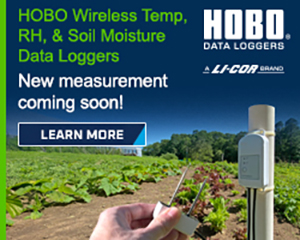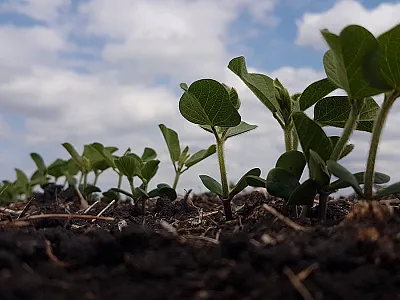The Corn Chronicles: Knowing Corn’s Past Helps Next Season’s Hybrid Selection


Today, 90 million acres are planted in corn in the U.S., producing an average of roughly 15 billion bushels per year (https://bit.ly/3SE9T8F). Corn yields have increased tremendously since the 30 bu/ac days of the 1930s when Reid’s Yellow Dent was just facing competition from the first batches of hybrid corn. This article looks at the development and improvement of hybrid corn over the years and provides tips for selecting next season’s hybrids. Earn 1 CEU in Crop Management by reading this article and taking the quiz at https://web.sciencesocieties.org/Learning-Center/Courses.
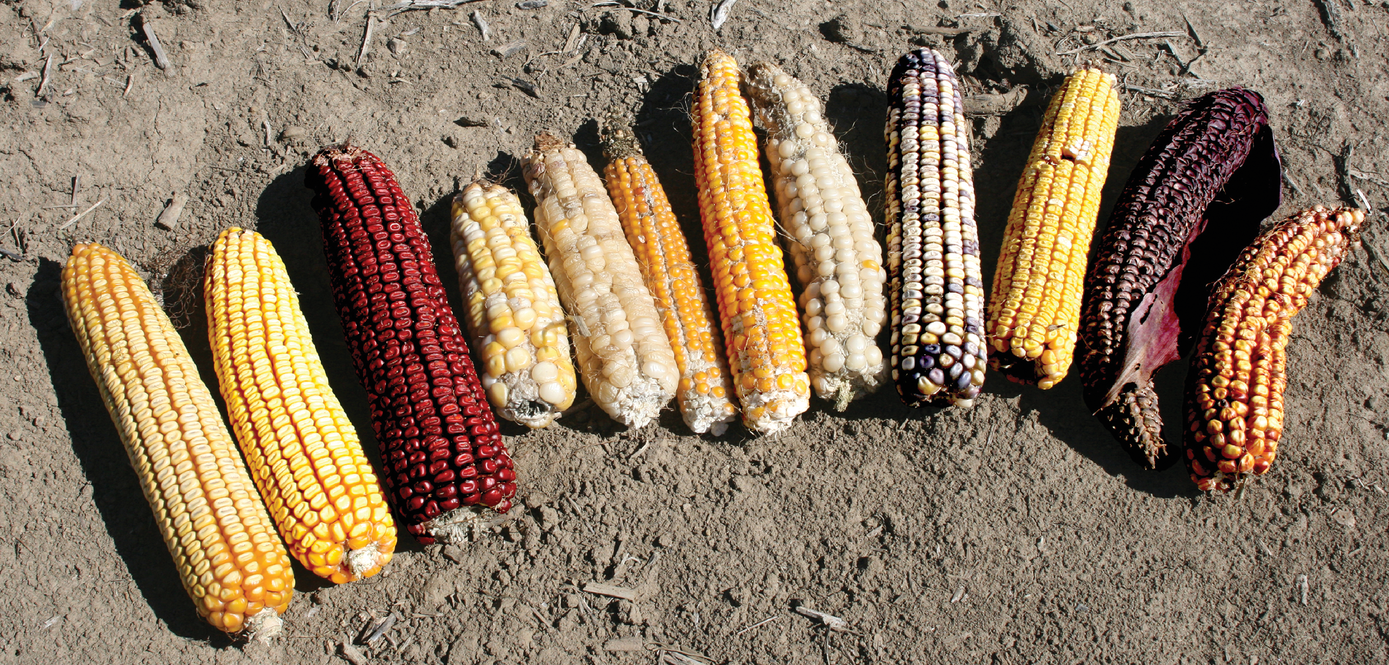
Reid’s Yellow Dent is lanky, not uniform, and prone to lodging. Standing next to rows of a squatter, less variable modern hybrid, it almost looks like a before-and-after photo of a once sweet, now unruly teenager who’s determined to rock a mohawk. Harold Watters has spent true quality time with Reid’s Yellow Dent Corn. This over 100-year-old “antique” variety has been Watters’ pet comparison to modern hybrid corn on a research plot at the Ohio State University Western Agriculture Research Station in Springfield, OH, since 2011. Watters, an agronomist and emeritus associate professor at Ohio State University, has compared yields between RYD and modern hybrids to show just how far corn breeding has come over the past 100 years.
Today, 90 million acres are planted in corn in the U.S., producing an average of roughly 15 billion bushels per year (https://bit.ly/3SE9T8F). Corn yields have increased tremendously since the 30- bushel-per-acre days of the 1930s, when Reid’s Yellow Dent was just facing competition from the first batches of hybrid corn. Between 2016 and 2021, corn yields averaged 174 bushels per acre (https://bit.ly/3G0lZRP). Hybrid corn can take credit for the bulk of this productivity boon.
The Origins of Corn
Corn has a 9,000-year history, but we’ll keep it brief. It hails from Mexico and South America in the form of teosinte, a grass that produces small brown-beige grain. Teosinte looks nothing like modern corn—it has multiple tillers with hard, encapsulated seeds growing on a thin three-inch axis. But teosinte and corn can crossbreed, and they share the same order of genes on the same chromosomes (https://bit.ly/46haOPk). In fact, they’re classified as the same species, Zea mays.

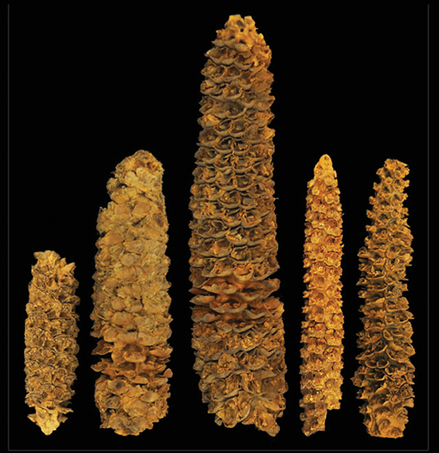
The dramatic differences between corn and teosinte link back to mutations in just five key regions of teosinte’s genome (https://bit.ly/3QWognp). Over the course of nine millennia, early plant breeders saved and planted seeds from the offspring of teosinte that grew more upright, had fewer tillers, and produced ears covered in protein-, fat-, and starch-filled attached grains. Changes in just one teosinte gene dramatically altered kernel structure and plant architecture. These changes removed the hard, stone-like casing from kernels, allowing animals to digest them instead of passing them through their digestive systems intact and dispersing them as seeds.
But corn is not a monolith—it includes varieties like flint, dent, pod, sweet, flour, and popcorn, all with different traits that early farmers selected during its 9-millenia domestication. Since the time of Reid’s Yellow Dent, advances in hybrid development and genetic engineering have led to a new host of traits in corn like disease, pest, herbicide, and drought resistance.
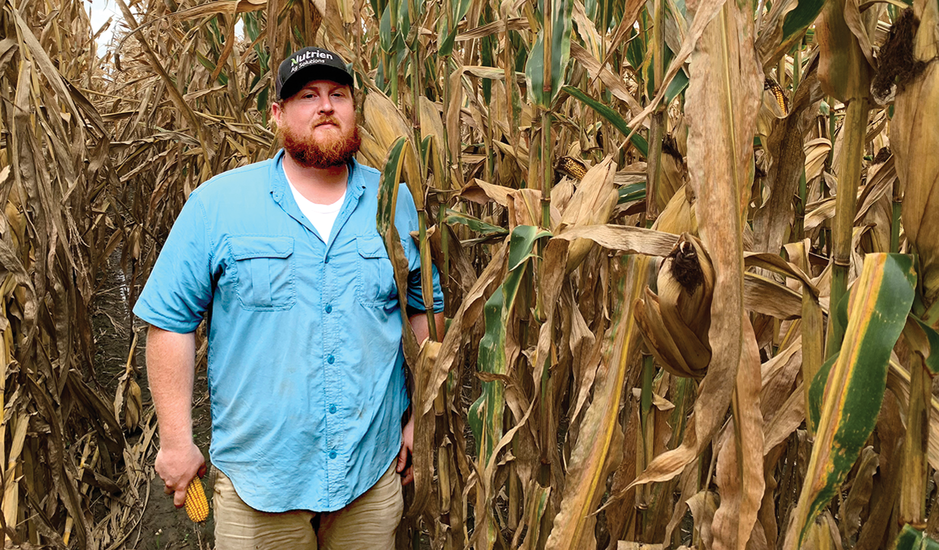
The Skinny on Hybrid Corn
Corn can be fertilized by another plant through cross-pollination when the pollen of one plant lands on the silk of another, or self-pollinated when a plant’s pollen falls on its own silk.
When a plant self-pollinates the first time, there is still a fair amount of genetic variation in the seeds it produces, which is why you might end up with an ear of open pollinated corn with all different colors of kernels on a single cob. But after seven rounds of self-pollination, over 99% of seeds produced by that plant are virtually genetically identical and the plant is called an “inbred” variety (https://bit.ly/3SIvRar).
However, these inbred lines are often less vigorous and productive than the open-pollinated varieties they came from. Why bother with inbreeding at all? Remarkably, after just one cross the first generation (or F1) hybrid corn shows the benefits of heterosis, or “hybrid vigor.” The F1 cross often outperforms the inbred parent line, and frequently outperforms open pollinated corn. You can see the difference between the yield of modern hybrids and the performance of Reid’s Yellow Dent, an “antique” variety, on fields under the same management over ten years in Table 1.
“We have a tremendous advantage with today’s hybrid varieties,” Watters says. “We can produce so much more corn on fewer acres.”
Year | Modern Hybrid Yield (bu/A) | Reid’s Yellow Dent Yield (bu/a) |
|---|---|---|
2021 | 259.4 | N/A |
2020 | 236.5 | 105.7 |
2019 | 295.8 | 124.1 |
2018 | 242.5 | 85.5 |
2017 | 259.9 | 94.9 |
2016 | 227.1 | 67.2 |
2015 | 233.5 | 87.1 |
2014 | 178.5 | 96.9 |
2013 | 222.3 | 82.4 |
2012 | 233.7 | 93.3 |
2011 | 193.8 | 93.1 |
Average | 232.4 | 93.0 |
Hybrid corn has dramatically changed seed production. Before the widespread use of hybrid corn in the 1930s, seed distribution was open and often localized. Any farmer could write the USDA for the corn seed of their choosing and receive a packet in the mail. Farmers often saved seed from their own top-performing corn to plant the next year, and local groups bred seed with region-specific characteristics.
In 1917, Donald F. Jones discovered the benefits of hybrid corn. By the 1920s, Henry Agard Wallace was testing and producing hybrid corn at the Iowa Experiment Station (https://bit.ly/3MIWl87). By 1924, Wallace’s hybrid corn won first prize in field trials, and in 1925 the first hybrid corn was sold commercially. Commercial hybrid corn opened the door t proprietary germplasm as breeders strove to produce seed that would sell well and outperform its competitors.
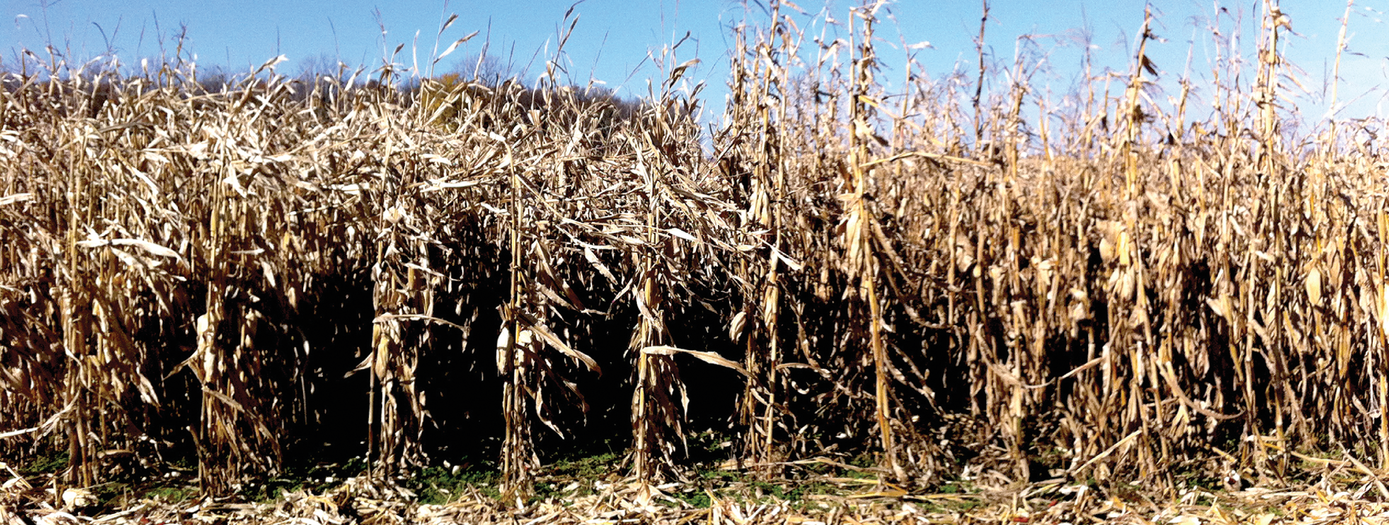
Now, corn seed sales are dominated by three major companies in the U.S.: Bayer, Corteva, and ChemChina’s Syngenta Group (https://bit.ly/3QZE9cM). By creating inbred parent lines, seed producers and plant breeders give themselves a stock of reliable, genetically identical parents to use in producing hybrid lines. This means that the seed produced by a cross between two inbred parents will be virtually identical. This makes it easier to produce seed supplies at scale.
Plus, hybrid lines open opportunities to select for specific disease- and pest-resistance traits, as well as drought tolerance. It even allows the incorporation of traits discovered in other organisms. An example: Transgenic insect resistance has been incorporated in corn using a gene from a species of soil bacteria called Bacillus thuringiensis. These genes are known as “Bt” genes.
Over 90% of corn grown in the United States is genetically engineered and contains traits from genes first discovered in other species.
Transgenic Traits and Genetic Engineering
When your cousin, client, or curious neighbor asks about genetically modified corn, how do you explain it?
Genetic engineering or genetic modification are loose terms that can apply to everything human beings have done to modify or domesticate crops. Misperceptions perpetuated by images like a tomato with a syringe in it only add to the confusion. Genetic engineering is a term most often used when talking about the addition of one or more genes from one organism into another species. In practice, this looks like finding a specific gene that might add benefits to a crop, essentially copying and pasting that gene into the original organism’s DNA at the right place for it to have an impact on the plant’s function, then adding that DNA into the tissue of a small, living corn plant.

Photo courtesy of Flickr/K-State Research and Extension and published under this license: https://creativecommons.org/licenses/by/2.0/
“A tremendous amount of our management decisions tends to be short-term fixes, and a lot of time, short-term fixes don’t necessarily solve long-term problems.”
But it’s not ready for growing in your field yet. That corn plant, with its new gene, must grow to maturity and be crossed with another plant one or more times to make sure all the traits the farmer needs are present (https://bit.ly/3uhy6az). Then, seed manufacturers or university programs put the seed through multi-year, multi-location variety trials before releasing it for sale.
That process has allowed plant breeders to add genes to corn that can help plants resist diseases, survive pests, and tolerate drought. They can also be used to confer resistance to herbicides, like in glyphosate-resistant crops.
“A lot of people have forgotten about the intensity of pesticide use in the ‘80s and early ‘90s,” Mark Licht, associate professor and extension cropping systems specialist at Iowa State University, says. “Seed companies responded to that and helped us use lower toxicity pesticides to go with those traited hybrids.”
Now, herbicide resistance is pushing academics, industry members, and farmers to look for new herbicide modes of action (MOAs) and potentially new genes that confer crop resistance to pests, diseases, and competition (https://bit.ly/3MIGV3D). For example, glyphosate-resistant weeds are making Roundup-ready crops less useful. But it could be that among the millions of organisms there is another gene that confers resistance to a novel herbicide MOA that could help us modify corn to make use of a new herbicide.
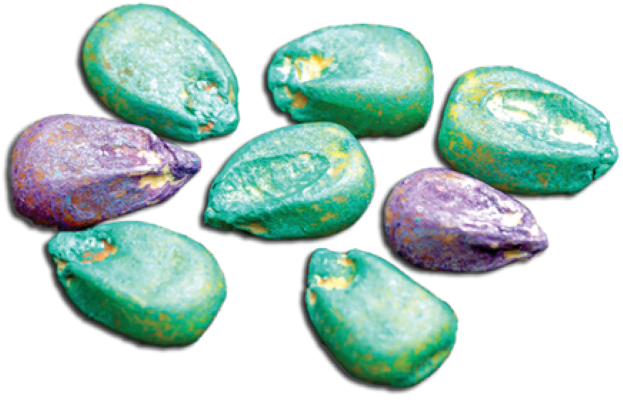
Genetically modified corn is part of that calculus, and careful selection of hybrids to decrease disease pressure and herbicide use can help us avoid using more—and more toxic pesticides. Licht recommends thinking about long-term outcomes on your farm, not just short-term fixes.
“Farmers need to make a profit, so we tend to think in one, two, or three-year timelines,” Licht says. “A tremendous amount of our management decisions tends to be short-term fixes, and a lot of time, short-term fixes don’t necessarily solve long-term problems.”
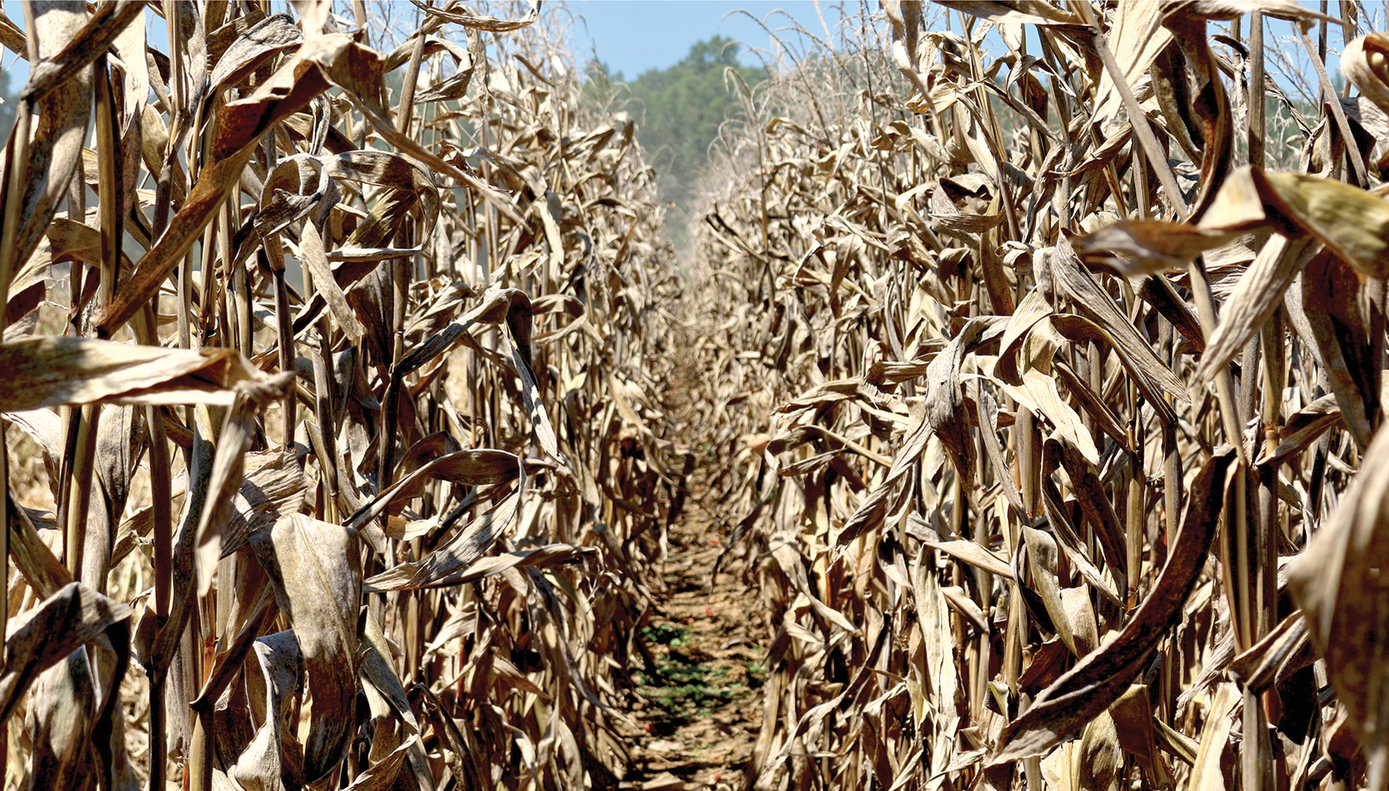
Tips for Selecting Next Season’s Corn Hybrids
The seed catalogue can be overwhelming. The key to sorting through this information, according to Licht, is filtering and prioritizing.
Filtering: Use key constraints from your fields to eliminate hybrids from your pool of contenders.
Prioritizing: Identify the key management factors that you need to use to make a profit next season and narrow down your options to only hybrids that can meet your goals.
Here are eight tips from Licht to help you and your clients sort out next season’s picks.
1. Start with a high-yielding variety or hybrid.
- “If you don’t choose something that’s high-yielding, you won’t get high yields,” Licht says. It may seem like an obvious place to start, but winnowing down varieties by yield helps make your decision easier.
2. Check out the field’s soil fertility.
- Use soil test data for specific fields to inform which hybrids you choose for that field. For example, some hybrids perform better in high fertility fields, while others suffer much more.
- Knowing which hybrids work best with your specific soil can help give you wiggle room when it comes to adding nutrients to the soil.
- Another thing to ask: What was the last crop on that field? Was it corn? Beans? That could tell you a lot about the nutrients that will be available to the corn in the spring and help you choose hybrids that can handle the planting conditions on your field.

3. Review disease pressure.
- Any small signs of disease in a hybrid in one field can turn into much larger issues if you use the same hybrid in that field the following year.
- Pay extra attention to this in continuous corn rotations.
4. Spread out your risk.
- If it’s a new hybrid, Licht recommends trying it out on a hundred acres or less.
- Reducing the number of acres in a new hybrid minimizes your losses if the hybrid does not perform how you expect.
5. Balance transgenic traits with management.
- If you pay a “tech” fee or “trait” fee, make sure it’s something that you do need and wil use. Paying for disease resistance in the hybrid and fungicides during the season can cut into your profits per acre.
- Transgenic traits come with a sticker cost. Before loading up on traits, consider how they will interact with your management practices.
- For example, you might be able to save $50-100 per bag of seed by foregoing transgenic traits. But you’ll likely need to use seed treatments, in-season management, and integrated pest management to maintain yields.
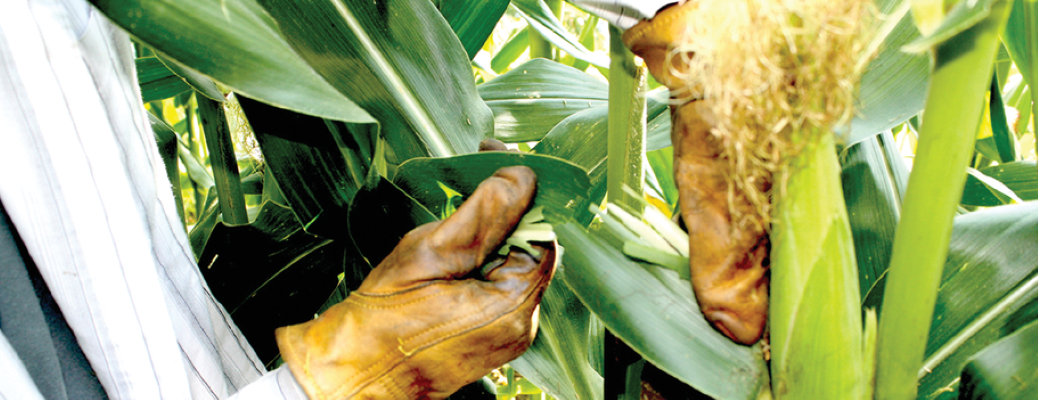
6. Check out yield data from multiple years and locations.
- “Past performance doesn’t always indicate future performance,” Licht says. Even if a hybrid did well on your field—or in a yield trial—doesn’t necessarily mean it will be the best pick for the next year. The best way to get an idea of “predictive performance” is to check out data from as many multi-year, multi-location trials as you can.
- Combine information for the seed company, universities, cooperatives, FFA, or wherever you can find information about public trials.
- Narrow the information to a geographic region you’re comfortable with.
- Pay close attention to management and climate factors that could impact yield. Noting tillage type, whether cover crops were used, and the kinds of herbicides and insecticides used during trials will help you understand whether the hybrid is a good fit for your field.
7. Consider timing to maximize yield potential.
- Full season, medium maturity, and early maturity hybrids. Using a good mix can help maximize yield potential by staggering harvest dates.
- If you don’t have a dryer, consider using earlier-maturity hybrids to give your crops more time to dry down in the field before harvest.
- “We typically can’t harvest as fast as we plant,” Licht says. Staggering the maturity of your hybrids field-by-field will help you make harvest more manageable and keep your corn above 15% moisture when you harvest.
- Bonus: Staggering your plant maturity means that any stressors during the growing season won’t hit all your plants during the same point in their maturity. That could help you minimize losses if one field goes through a drought during pollination while others may be a little earlier or later in maturity and not impacted as much.
8. Consider market selections.
- Certain corn varieties have properties targeted for specific markets.
- If you can get into a specific market (i.e., Enogen for an ethanol market), that’s another factor to consider during hybrid selection.
Dig Deeper
Learn more about the genomic background of today’s hybrids (and our reliance on Corn Belt Dent maize genetics) in this Crop Science article: Smith, J. S., Trevisan, W., McCunn, A., & Huffman, W. E. (2022). Global dependence on Corn Belt Dent maize germplasm: Challenges and opportunities. Crop Science, 62, 2039– 2066. https://doi.org/10.1002/csc2.20802
Self-Study CEU Quiz
Earn 1 CEU in Nutrient Management by taking the quiz for the article at https://web.sciencesocieties.org/Learning-Center/Courses. For your convenience, the quiz is printed below. The CEU can be purchased individually, or you can access as part of your Online Classroom Subscription.
- In the 1930s, corn yields were about _______ while between 2016 and 2021 corn yields averaged ______.
- 95 bu/ac, 247 bu/ac
- 50 bu/ac, 208 bu/ac
- 30 bu/ac, 174 bu/ac
- 28 bu/ac, 147 bu/ac
- Teosinte and modern corn are classified as the same species, Zea mays.
- True
- False
- Which of the following is NOT one of the traits that early plant breeders selected for when breeding teosinte?
- Sprawling plant architecture
- Fewer tillers
- No hard, stone-like casing on kernels
- Larger grains
- Upright growth
- How many rounds of self-pollination does it take for a plant to produce over 99% of seeds that are virtually genetically identical?
- 5
- 7
- 9
- 13
- What are plants called that are produced by the virtually genetically identical seeds mentioned in Question 4?
- Reid’s Yellow Dent
- Hybrids
- Varieties
- Inbred
- “Hybrid vigor” is a term that refers to:
- The improved performance of offspring of crossed inbred lines
- The early and rapid growth of hybrid corn plants
- The traits of hybrid corn
- The state in which inbred corn is less vigorous and productive than open-pollinated corn
- According to the data in Table 1, the modern hybrid yield average was _______ the average yield of Reid’s Yellow Dent.
- About the same as
- One and a half times as much as
- More than twice as much as
- Three times as much as
- Which of the following is a critical consideration for selecting next year’s hybrid when planting continuous corn?
- Catching small signs of disease pressure in those fields
- Choosing high-yielding varieties
- Foregoing transgenic traits
- Choosing corn for a specific market
- You should check out hybrid yield data from multiple years, but looking at multiple locations isn’t important.
- True
- False
- Staggering the maturity and type of hybrids on a field-by-field basis will help you:
- Better manage harvest timing
- Keep corn above 15% moisture when you harvest
- Spread out your risk when trying new hybrids
- All of the above
Text © . The authors. CC BY-NC-ND 4.0. Except where otherwise noted, images are subject to copyright. Any reuse without express permission from the copyright owner is prohibited.



